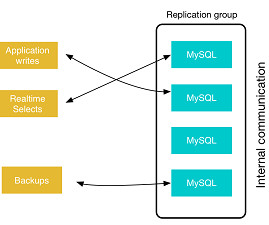Setting Up and Deploying PostgreSQL for High Availability
Percona
JULY 7, 2023
HA in PostgreSQL databases delivers virtually continuous availability, fault tolerance, and disaster recovery. In general terms, to achieve HA in PostgreSQL, there must be: Redundancy: To ensure data redundancy and provide continuous performance when a primary server fails, multiple copies of the database reside in replica servers.











Let's personalize your content